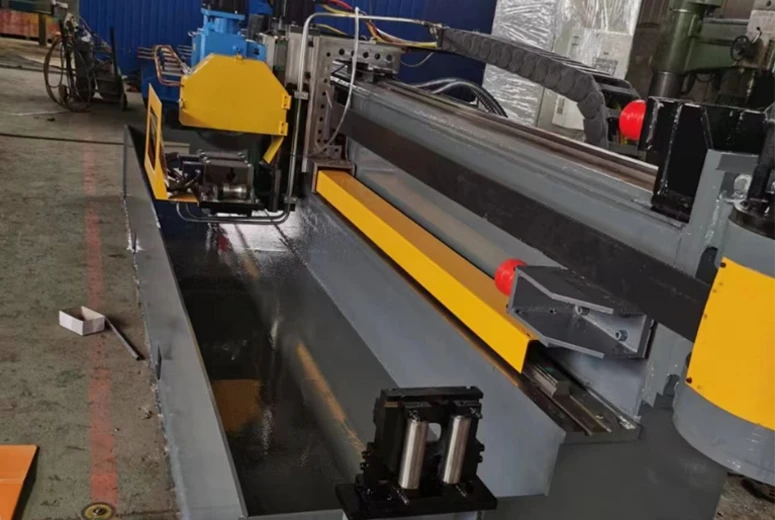Stainless Steel Pipe Production Equipment and Technologies for Efficient Manufacturing
The Evolution of Stainless Steel Pipe Manufacturing Machines
Stainless steel pipes are an essential component in various industries, including construction, automotive, aerospace, and pharmaceuticals. The ongoing demand for high-quality stainless steel pipes has led to significant advancements in manufacturing technology. Stainless steel pipe manufacturing machines have evolved tremendously over the years, incorporating innovative techniques and automation to enhance productivity and efficiency.
Historical Context
The manufacturing of stainless steel pipes began in the early 20th century when stainless steel was first developed. Initially, the production process was manual and labor-intensive. As demand increased, manufacturers sought methods to automate and streamline production. Over the years, various machines were designed to tackle different stages of the pipe manufacturing process, from raw material preparation to final inspection.
Modern Manufacturing Machines
Today, the stainless steel pipe manufacturing process includes several key stages such as cutting, forming, welding, and finishing. Modern machines equipped with advanced technologies have revolutionized these stages.
1. Cutting Machines The process starts with cutting stainless steel sheets or strips into required lengths. High-speed cutting machines, such as laser and plasma cutters, provide precision and efficiency while minimizing waste.
2. Forming Machines Once cut, the stainless steel pieces undergo forming, where they are shaped into pipes. This is typically done using roll forming or bending machines. Computer Numerical Control (CNC) technology has been integrated into forming machines to allow for intricate designs and consistent product quality.
stainless steel pipe manufacturing machine

3. Welding Machines One of the most critical stages in pipe manufacturing is welding. High-frequency induction and TIG (Tungsten Inert Gas) welding machines are commonly used. These machines ensure strong, clean welds while maintaining the integrity of the stainless steel, which is crucial for applications that involve high pressure or corrosive environments.
4. Finishing Machines After welding, the pipes go through finishing processes, which may include polishing, deburring, and coating. Automated finishing machines enhance surface quality and can apply treatments to improve corrosion resistance.
Automation and Industry 4.0
The introduction of automation and Industry 4.0 principles into stainless steel pipe manufacturing has profoundly impacted productivity. Automated systems can monitor production in real-time, making adjustments as needed to ensure optimal efficiency. Sensors and IoT (Internet of Things) devices provide valuable data that can be analyzed to improve processes, reduce downtime, and predict maintenance needs.
One significant advancement is the use of robotic systems. Robots can handle repetitive tasks such as loading, unloading, and quality inspection, freeing human operators to focus on more complex tasks. This shift not only increases productivity but also enhances workplace safety by minimizing human exposure to hazardous environments.
Conclusion
As the global demand for stainless steel pipes continues to grow, the manufacturing process will undoubtedly evolve. Innovations in manufacturing machines will play a crucial role in meeting industry needs, improving quality, and reducing costs. The integration of automation and advanced technologies will ensure that manufacturers remain competitive in a rapidly changing market.
In summary, stainless steel pipe manufacturing machines have come a long way from their manual origins. Today’s state-of-the-art machines, equipped with cutting-edge technology, enable manufacturers to produce high-quality stainless steel pipes efficiently and sustainably. As we look to the future, continued advancements in this field are essential for meeting the challenges of an ever-evolving industrial landscape.
-
High Frequency Straight Seam Welded Pipe Production Line-BzZhou Xinghua Machinery Equipment Manufacturing Co., LTD.|line pipe steel&welded gas pipeNewsJul.30,2025
-
High Frequency Straight Seam Welded Pipe Production Line-BzZhou Xinghua Machinery Equipment Manufacturing Co., LTD.|High Precision&Automated SolutionsNewsJul.30,2025
-
High Frequency Straight Seam Welded Pipe Production Line - BzZhou Xinghua Machinery Equipment Manufacturing Co., Ltd.NewsJul.30,2025
-
High Frequency Straight Seam Welded Pipe Production Line-BzZhou Xinghua Machinery Equipment Manufacturing Co., LTD.|Precision Welding, High EfficiencyNewsJul.30,2025
-
High Frequency Straight Seam Welded Pipe Production Line|BzZhou Xinghua|Precision Welding&EfficiencyNewsJul.30,2025
-
High Frequency Straight Seam Welded Pipe Production Line - BzZhou Xinghua|Precision Engineering&EfficiencyNewsJul.30,2025


